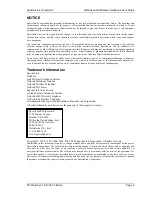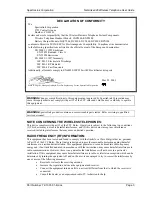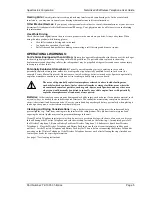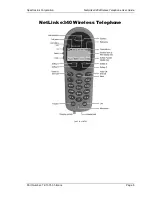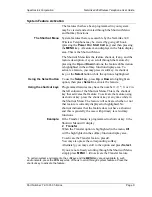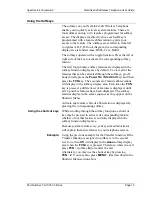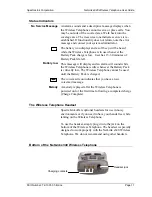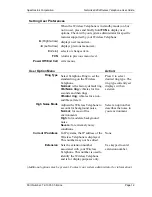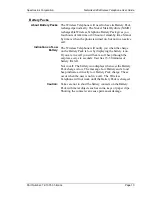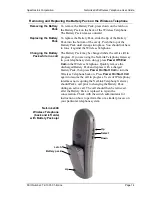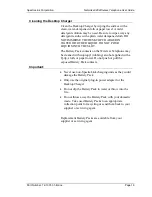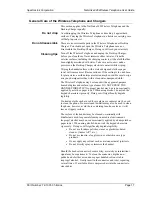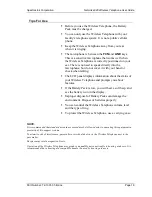
SpectraLink Corporation
NetLink e340 Wireless Telephone User Guide
Part Number: 72-1001-01-B.doc
Page 3
DECLARATION OF CONFORMITY
We
Spectralink Corporation
5755 Central Avenue
Boulder, CO 80301
declare under sole responsibility that the Wireless Business Telephone System Components:
Wireless Telephone Handset Models; SNP2400, RNP2400
Battery Charger Models; BQC7204, DCE100, DCX100, BPE100, BPX100
conform to Directive 89/336/EEC for Electromagnetic Compatibility. Compliance was demonstrated
to the following specifications as listed in the official Journal of the European Communities:
EN 50081-1:1992 Emissions:
EN 55022 Radiated, Class A
EN 55024 Emissions
EN 50082-1:1997 Immunity:
IEC 801-2 Electrostatic Discharge
IEC 801-3 RF Radiated
IEC 801-4 Fast Transients
Additionally, all models comply to EN60950/ IEC950 with CB certificates & reports.
Mark R. Angliss, Manager; Quality & Process Engineering, For the SpectraLink Corporation
May 23, 2003
WARNING
Changes or modifications to this equipment not approved by SpectraLink Corporation may
cause this equipment to not comply with part 15 of the FCC rules and void the user’s authority to operate
this equipment.
WARNING
SpectraLink products contain no user-serviceable parts inside. Refer servicing to qualified
service personnel.
NOTE CONCERNING THE WIRELESS TELEPHONES:
This device complies with part 15 of the FCC Rules. Operation is subject to the following two conditions:
(1) This device may not cause harmful interference, and (2) this device must accept any interference
received, including interference that may cause undesired operation.
RADIO FREQUENCY (RF) INFORMATION:
This equipment has been tested and found to comply with the limits for a Class B digital device, pursuant
to Part 15 of the FCC Rules. These limits are designed to provide reasonable protection against harmful
interference in a residential installation. This equipment generates, uses and can radiate radio frequency
energy and, if not installed and used in accordance with the instructions, may cause harmful interference to
radio communications. However, there is no guarantee that interference will not occur in a particular
installation. If this equipment does cause harmful interference to radio or television reception, which can be
determined by turning the equipment off and on, the user is encouraged to try to correct the interference by
one or more of the following measures:
•
Reorient or relocate the receiving antenna.
•
Increase the separation between the equipment and receiver.
•
Connect the equipment into an outlet on a circuit different from that to which the receiver is
connected.
•
Consult the dealer or an experienced radio/TV technician for help.


